Many small fish are schooling species, living together in large groups as protection from predators. In the home aquarium, brightly colored schooling fish make a wonderful display, swimming through lush green plants in glittering, dynamic shoals.
Also, lots of the most popular schooling fish that you’ll find in your local fish store are easy to care for, making them an excellent choice for beginners and experienced aquarists alike.
Read this guide to discover 17 of the best schooling fish for freshwater aquariums.
17 Best Schooling Fish For Freshwater Aquariums
So, here are our favorite freshwater schooling fish species that make the ideal addition to any home tank.
1. Harlequin Rasboras
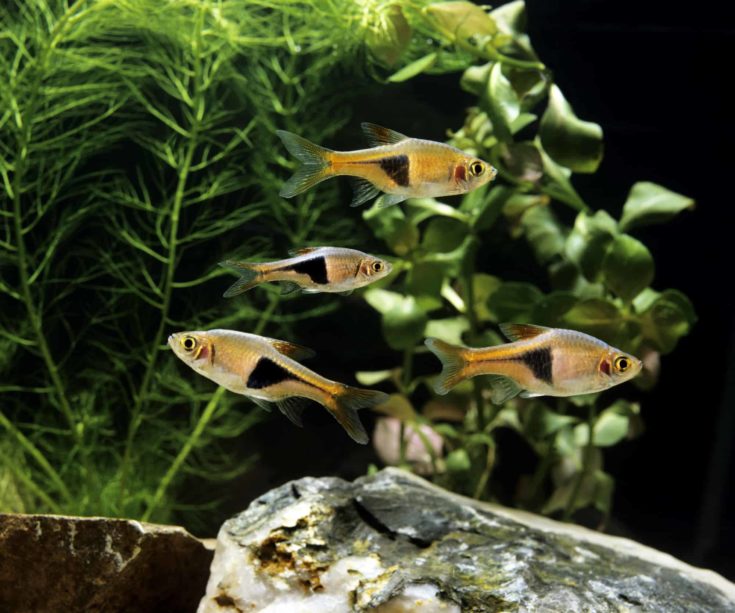
Scientific Name:
Trigonostigma heteromorpha
Experience Level:
Easy
Max Size:
2 inches
KH (Carbonate Hardness):
Peaceful
Min Tank Size:
10 gallons
Harlequin rasboras are beautiful little schooling fish that is a popular choice for many hobbyists. These peaceful fish are easy to care for and make a good addition to a community setup.
2. White Cloud Mountain Minnow
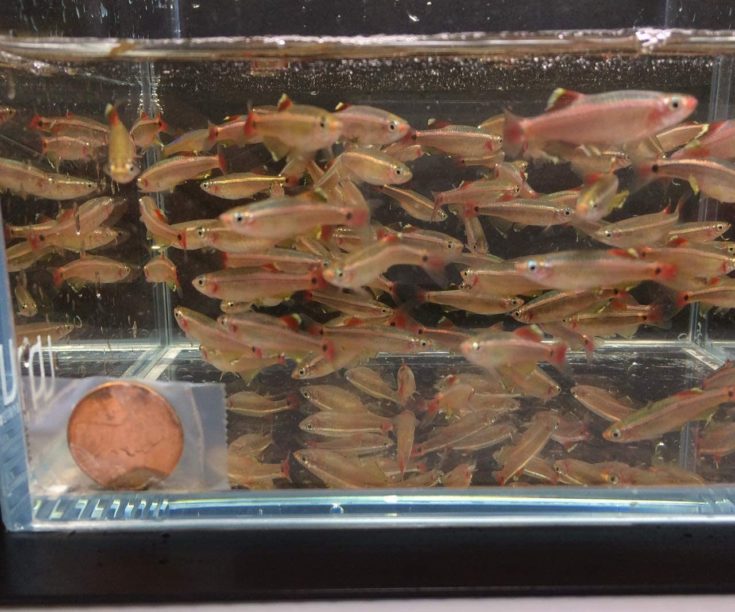
Scientific Name:
Tanichthys albonubes
Experience Level:
Easy
Max Size:
1.5 inches
KH (Carbonate Hardness):
Peaceful
Min Tank Size:
10 gallons
White Cloud Mountain Minnows are excellent nano fish for beginners that can live in lower temperatures than other tropical species. So, you don’t need a heater for your aquarium if you keep these pretty, active little fish.
3. Cherry Barb
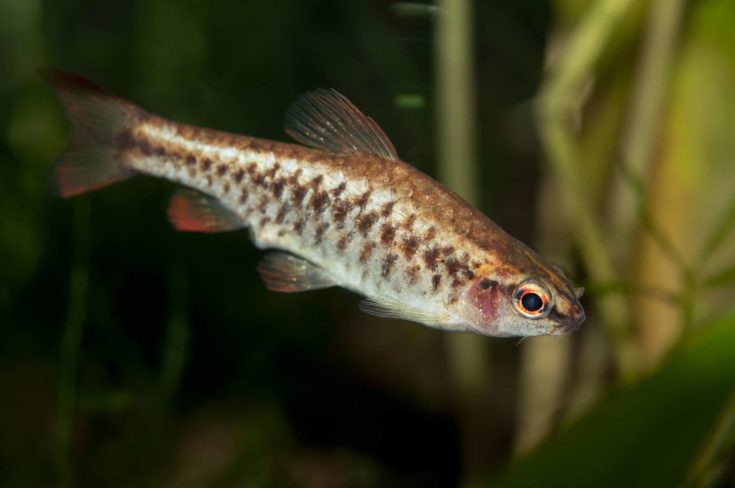
Scientific Name:
Puntius titteya
Experience Level:
Easy
Max Size:
2 inches
KH (Carbonate Hardness):
Peaceful
Min Tank Size:
25 gallons
Cherry barbs are named for the male fishes’ brilliant red color during the breeding season. These delightful schooling fish can add a gorgeous pop of color to a peaceful community setup. These barbs are also super-easy to care for, making them a popular choice for beginners.
4. Zebra Danio
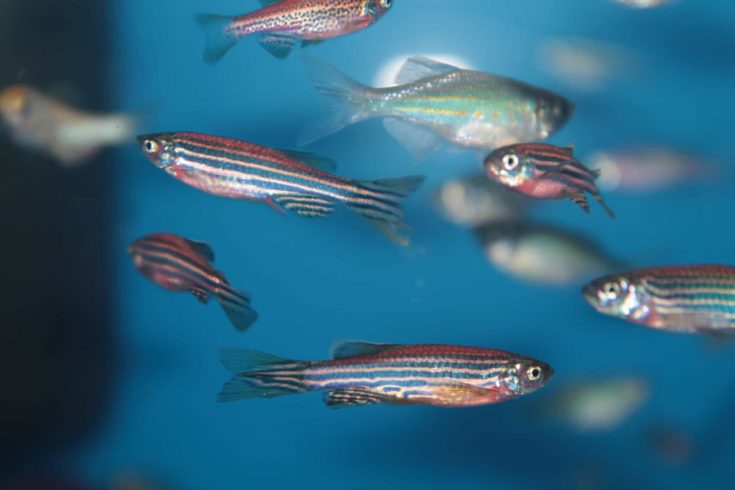
Scientific Name:
Danio rerio
Experience Level:
Easy
Max Size:
2 inches
KH (Carbonate Hardness):
Peaceful
Min Tank Size:
10 gallons
Zebra danios are classed as tropical species, although these members of the minnow family can live in cooler waters, too. Often regarded as hyperactive, these attractive nano fish are best-suited to life in large shoals in a busy community tank.
5. Clown Loaches
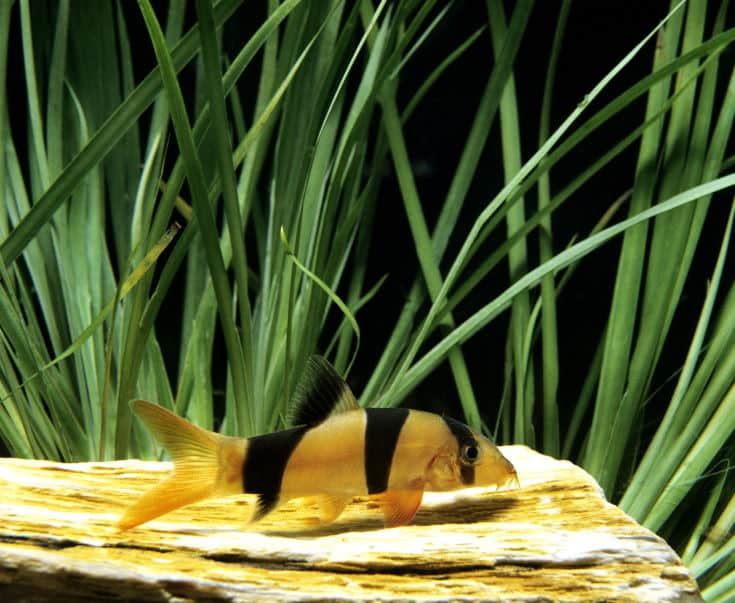
Scientific Name:
Botia macracantha
Experience Level:
Moderately difficulty
Max Size:
Up to 8 inches
KH (Carbonate Hardness):
Generally Peaceful
Min Tank Size:
100 gallons
Clown loaches are peaceful fish that can make a nice addition to a community tank. These fish are very active during the daytime, feeding on those annoying snails that can infest your fish tank. These fish are sometimes referred to as scaleless, but they do have tiny scales in their skin.
6. Platys
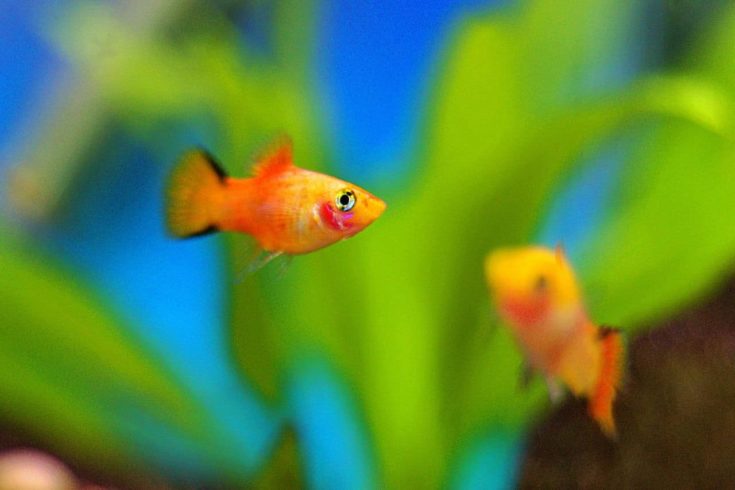
Scientific Name:
Xiphophorus maculatus
Experience Level:
Easy
Max Size:
2 inches
KH (Carbonate Hardness):
Peaceful
Min Tank Size:
15 gallons
Platys are brightly colored, lively little fish that make an excellent addition to a peaceful community setup. These fish are livebearers that readily reproduce, so you’ll never need to buy more!
7. Pygmy Corydoras
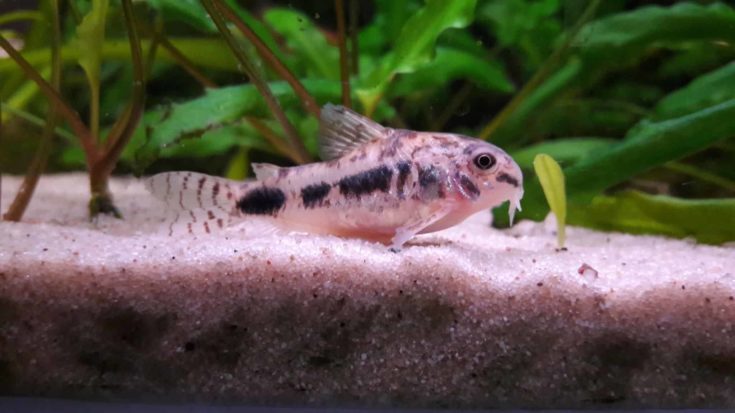
Scientific Name:
Corydoras pygmaeus
Experience Level:
Easy
Max Size:
1.2 inches
KH (Carbonate Hardness):
Peaceful
Min Tank Size:
10 gallons
Pygmy Corydoras are one of the smallest tropical schooling species that you can find for the home aquarium. These tiny fish do best when kept in large schools and make a very entertaining sight, scavenging busily on the bottom of the tank.
Pygmy Corys are easy to care for and seem to learn to recognize their owners!
8. Scissortail Rasboras
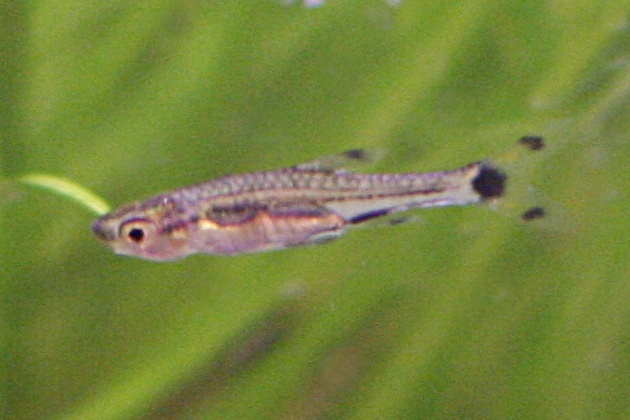
Scientific Name:
Rasbora trilineata
Experience Level:
Easy
Max Size:
6 inches
KH (Carbonate Hardness):
Peaceful
Min Tank Size:
20 gallons
Scissortail rasboras like to live in schools of at least six individuals. These are extremely active fish that enjoy living in a peaceful community setup, and when kept in large shoals, the fishes’ pretty, iridescent colors really come out.
These fish do exceptionally well when kept with other species of rasboras.
9. Red Rainbowfish
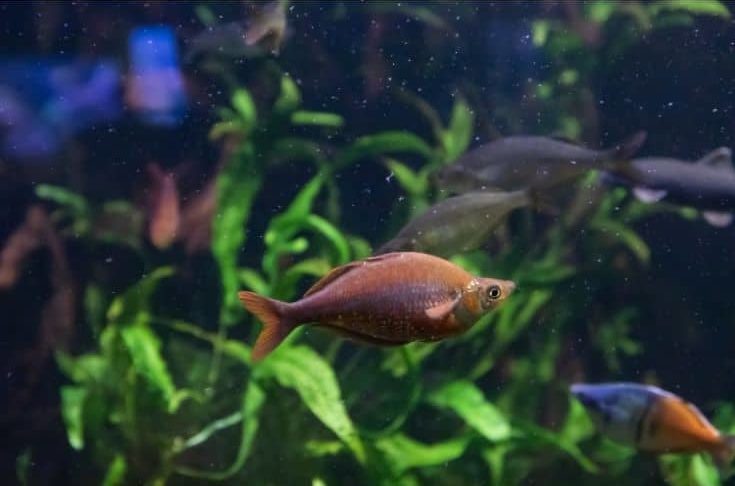
Scientific Name:
Glossolepis incisus
Experience Level:
Easy
Max Size:
6 inches
KH (Carbonate Hardness):
Peaceful
Min Tank Size:
35 gallons
Red Rainbowfish are one of several species of rainbowfish that do very well when kept in densely planted, peaceful community tanks. These fish need to live in groups of at least six, ideally more, and they need a tank that’s at least 4 feet long so that they have enough swimming space.
The juvenile fish are relatively drab in color, but once they reach adulthood, males are an absolutely gorgeous bright, metallic red color.
10. Corydoras Catfish
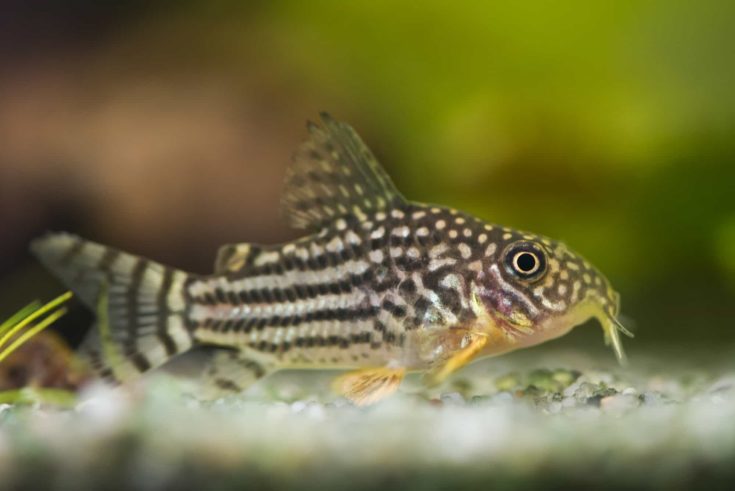
Scientific Name:
Corydoras
Experience Level:
Easy
Max Size:
1 to 2.5 inches
KH (Carbonate Hardness):
Peaceful
Min Tank Size:
10 gallons
Corys are one of the most popular beginner aquarium fish species in the hobby. These cute little fish spend their time foraging around on the bottom of the tank, living happily in groups of six or more. In the wild environment, corys of different varieties can be found living in shoals of hundreds strong.
11. Otocinclus Catfish
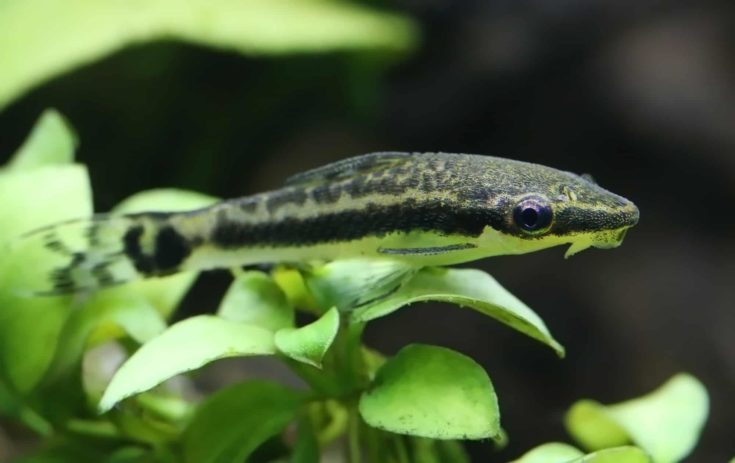
Scientific Name:
Otocinclus
Experience Level:
Easy
Max Size:
1.5 to 2 inches
KH (Carbonate Hardness):
Peaceful
Min Tank Size:
10 gallons
Otocinclus are a species of small, peaceful freshwater catfish that belong to the Loricarlidae family.
These fish are well-known as algae-eaters, and a small group of them make a wonderful cleanup crew in a community tank. In the wild environment, Otos live in huge shoals of thousands of fish.
12. Rummy-Nose Tetra
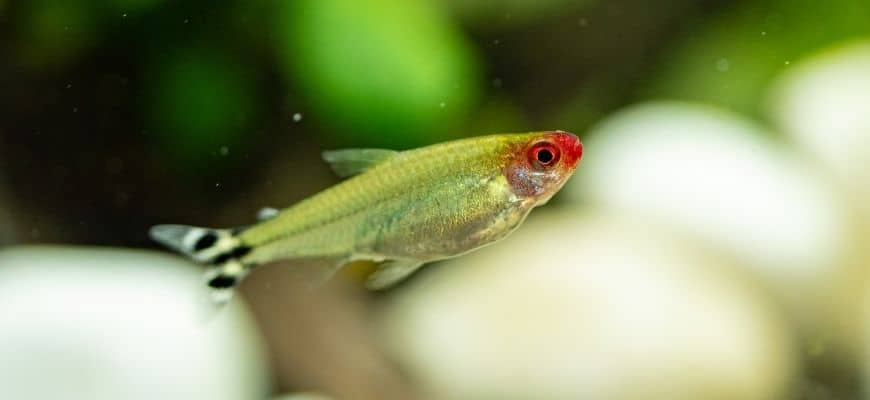
Scientific Name:
Hemigrammus rhodostomus
Experience Level:
Easy
Max Size:
2 to 2.5 inches
KH (Carbonate Hardness):
Peaceful
Min Tank Size:
20 gallons
In the wild environment, Rummy-Nose tetras live in acidic blackwater habitats where the substrate is covered with leaf litter, fallen branches, and general detritus. Here, the fish live in massive shoals, often hundreds strong.
In captivity, you’ll enjoy your fishes’ best colors if you replicate their natural dimly lit, tannin-stained home.
13. Cardinal Tetra
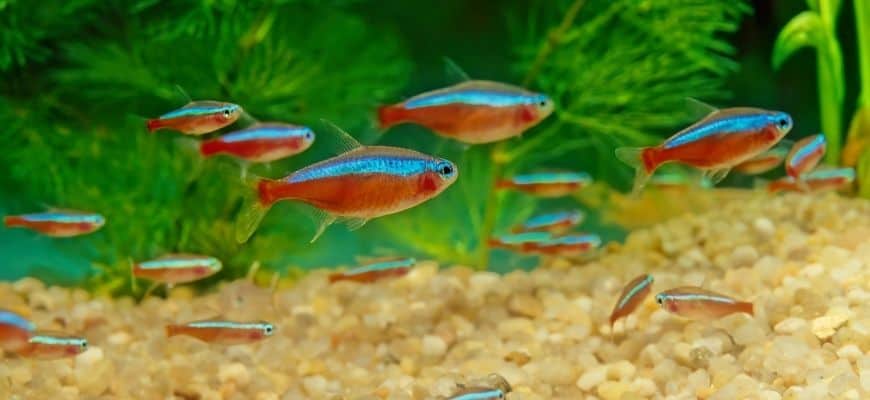
Scientific Name:
Paracheirodon axelrodi
Experience Level:
Easy
Max Size:
2 inches
KH (Carbonate Hardness):
Peaceful
Min Tank Size:
20 gallons
Cardinal tetras are often mistaken for their cousins, Neon tetras. Cardinals are not as easy to care for as Neon tetras because they are more sensitive to water conditions. So, if you take on a shoal of these glittering beauties, you’ll need to keep on top of your aquarium maintenance and cleaning tasks.
14. Bloodfin Tetra
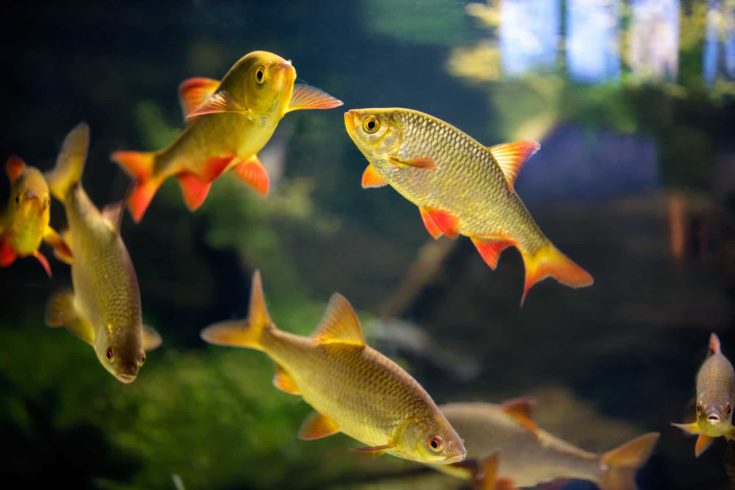
Scientific Name:
Aphyocharax anisitsi
Experience Level:
Easy
Max Size:
2 inches
KH (Carbonate Hardness):
Peaceful
Min Tank Size:
15 gallons
Bloodfin tetras make a super-cool and unusual addition to a peaceful community setup. These lively little fish are very easy to care for and look exquisite when displayed in large shoals.
Compared with other small tetra species, Bloodfins are relatively long-lived, often surviving for over seven years when given the correct conditions and a high-quality diet.
15. Congo Tetra
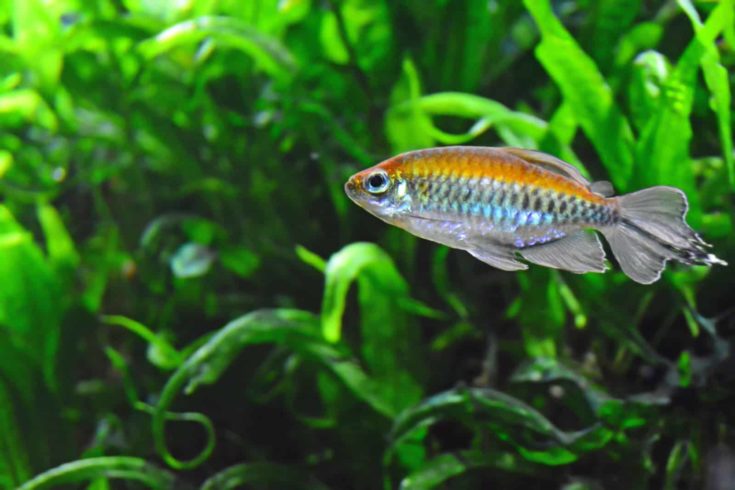
Scientific Name:
Phenacogrammus interruptus
Experience Level:
Easy
Max Size:
3 to 3.5 inches
KH (Carbonate Hardness):
Peaceful
Min Tank Size:
30 gallons
Congo tetras are one of the most colorful and beautiful tetra species that are often overlooked by the hobbyist.
These fish shimmer with every color of the rainbow, making a stunning display when kept in large schools, especially when shown against vibrant green planting and a dark substrate.
16. Neon Tetras
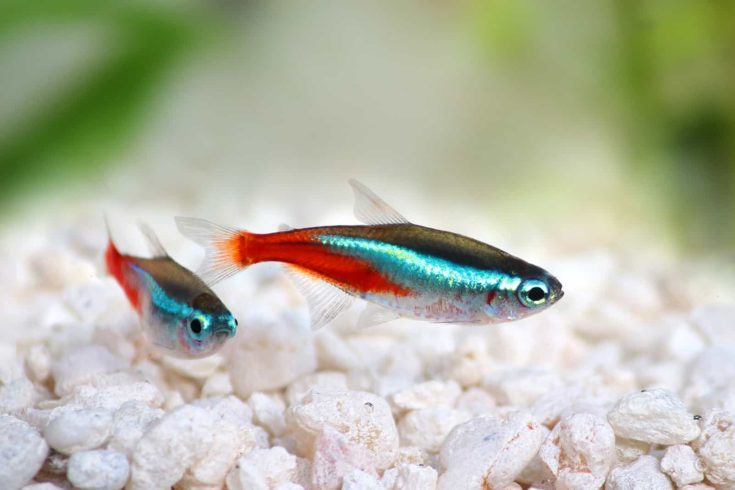
Scientific Name:
Paracheirodon innesi
Experience Level:
Easy
Max Size:
2 to 2.5 inches
KH (Carbonate Hardness):
Peaceful
Min Tank Size:
20 gallons
Neon tetras are probably one of the most popular species of tropical freshwater aquarium fish in the hobby.
These brightly colored, lively little fishes can be kept in large shoals of over six individuals. They are easy to care for and relatively hardy, too. Usually, you can buy these perennial favorites in fish stores at a discounted price if you purchase a large group.
17. Black Skirt Tetra
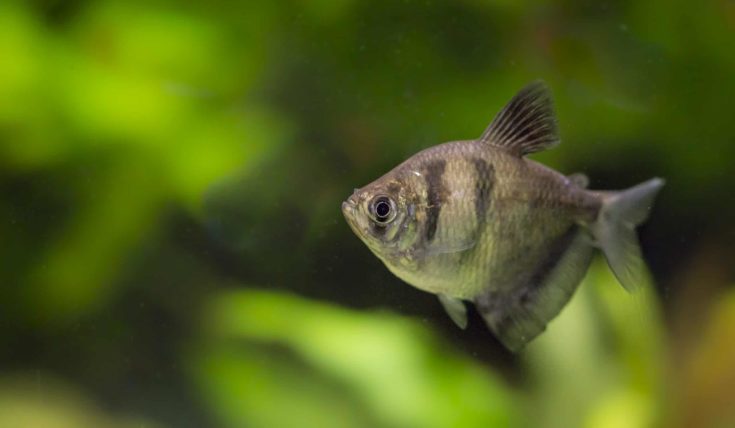
Scientific Name:
Gymnocorymbus ternetzi
Experience Level:
Easy
Max Size:
3 inches
KH (Carbonate Hardness):
Peaceful
Min Tank Size:
15 gallons
Black Skirt tetras look lovely when displayed in a tank with a dark substrate and plenty of brilliant green planting.
These hardy tetras are super-easy to keep, live happily as a group within a community tank of other peaceful species, and you can also breed them in captivity if you provide the fish with the correct conditions.
How Many Fish Make A School?
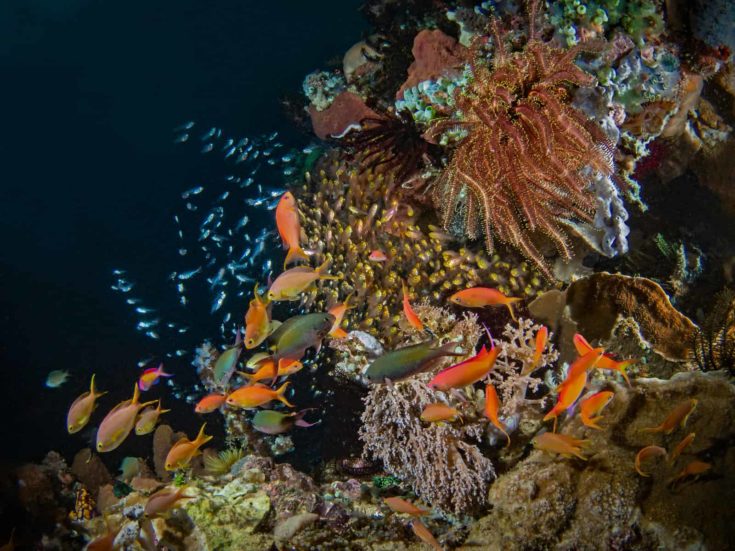
All the fish we’ve included in this guide need to live in schools.
So, what constitutes a school?
In the wild environment, schools of fish can range from hundreds to many thousands of individuals, depending on the species. However, for the purposes of this guide, a school should contain a minimum of five fish.
Schooling fish need to live in a group so that they feel safe and secure from attack by predators. Keeping schooling fish alone or in pairs causes stress, which ultimately will kill the fish.
Why Do Fish School?
The main reason that fish school is safety in numbers. Predators always try to pick off a lone fish rather than attempting to grab one fish from a large group. Also, fish can protect their territory much better in a group.
Also, swimming close to each other allows fish to conserve energy by reducing friction in the water. Food is easier to find as a group since you have multiple eyes and noses looking out for a likely meal. Finally, when fish spawn in a large school, there’s a good chance that at least some of their offspring will survive and escape predators.
Why Don’t Schooling Fish Collide?
Fish have a very complex combination of senses that enable members of the school to swim in very close proximity to each other without colliding.
It was once thought that the leader of the school somehow orchestrated the movements of the whole shoal. However, that’s been disproved, and it’s now understood that each individual fish reacts to the movements of the others around it, as well as external stimuli such as pheromones. So, if one fish changes direction, every other fish senses that and follows its lead.
Also, the fish’s physiology affects schooling behavior. Since fish have eyes on the side of their heads, they are able to see what’s next to them and move accordingly. Fish also use their lateral line, hearing, sense of smell, and sight to determine the direction in which the shoal is moving.
In Conclusion
I hope you enjoyed this guide to 17 of the best schooling fish species for freshwater aquariums. If you loved it, please remember to share.
There’s nothing quite as beautiful as a large school of glittering fish, swimming as one dynamic entity around a well-planted aquascape. Many of these fish are easy to care for and surprisingly long-lived for small species, giving them extra appeal for beginner and experienced hobbyists alike.
Do you have a setup that’s dedicated to shoaling fish? Tell us about your fish in the comments box below.
Excellent work. I enjoyed reading about some of my favorites.
Are all the 17 Schooling Fish showing here ok to keep together peacefully ?